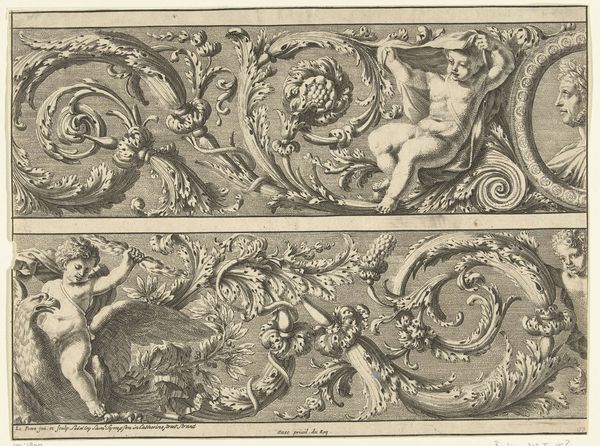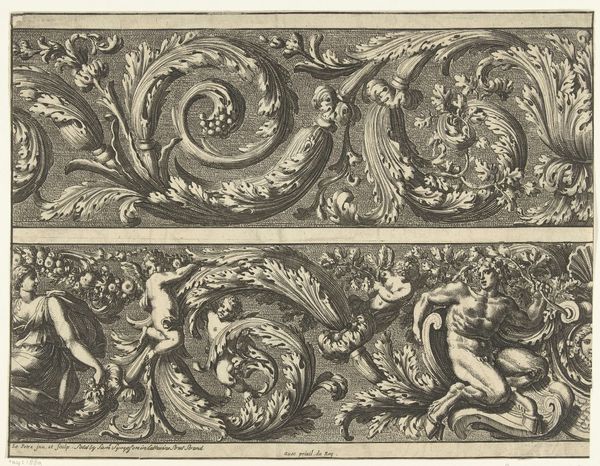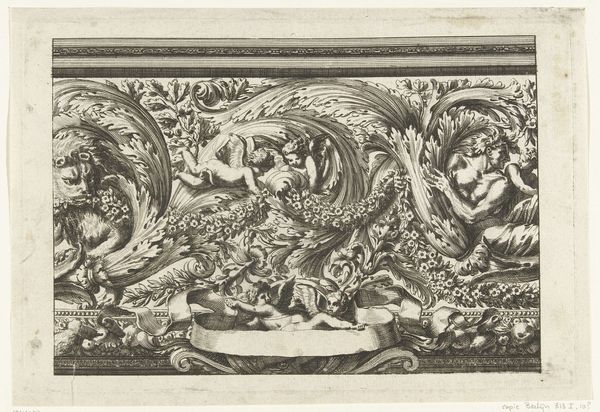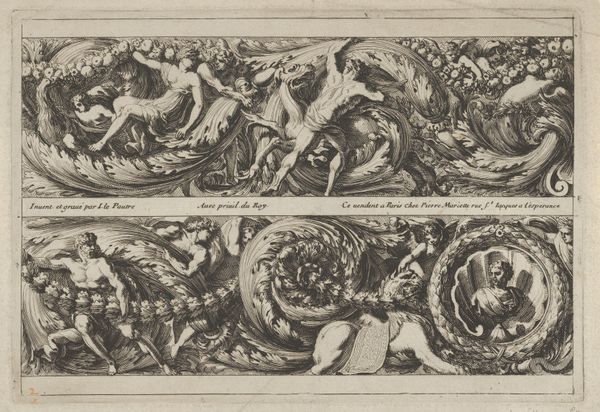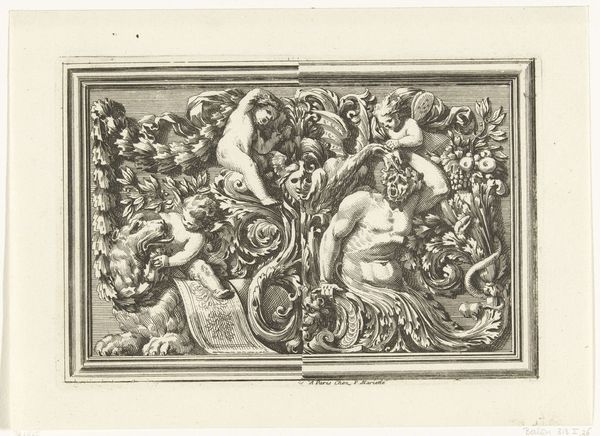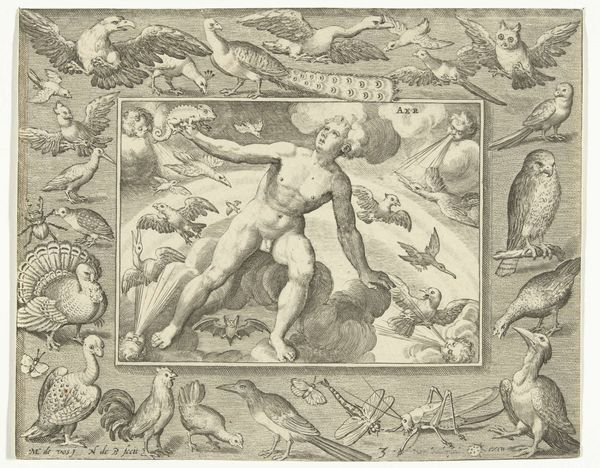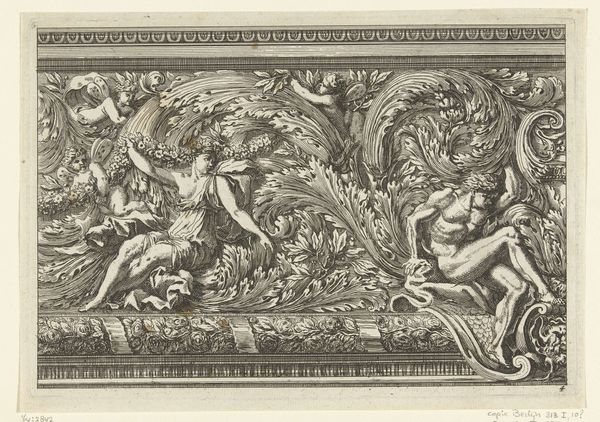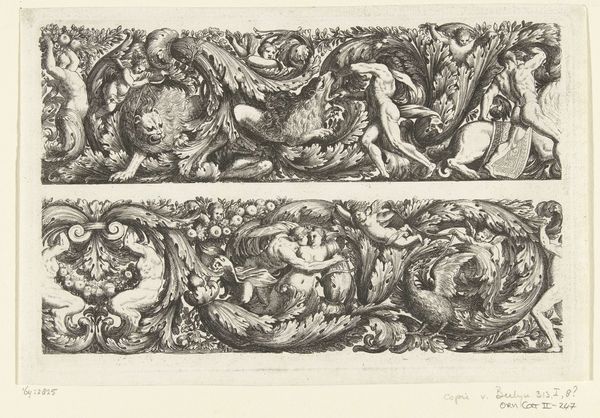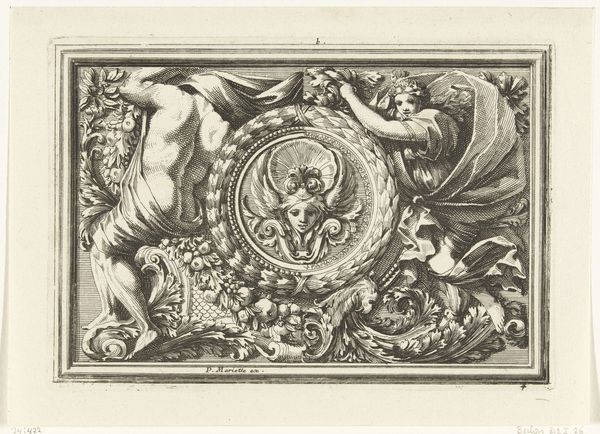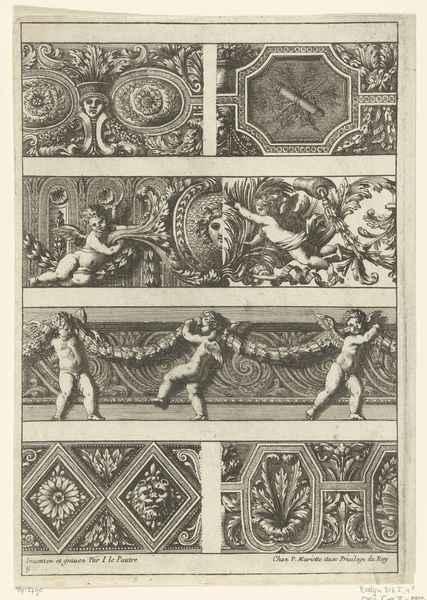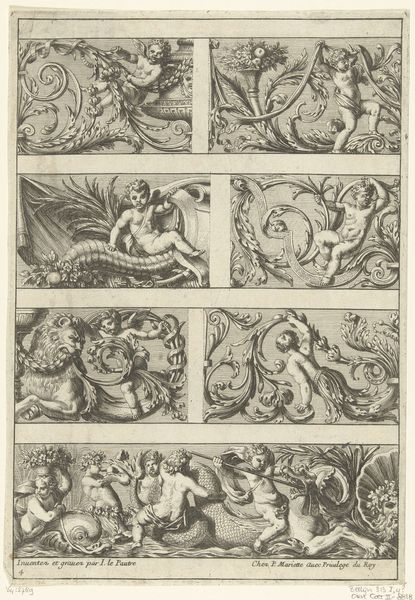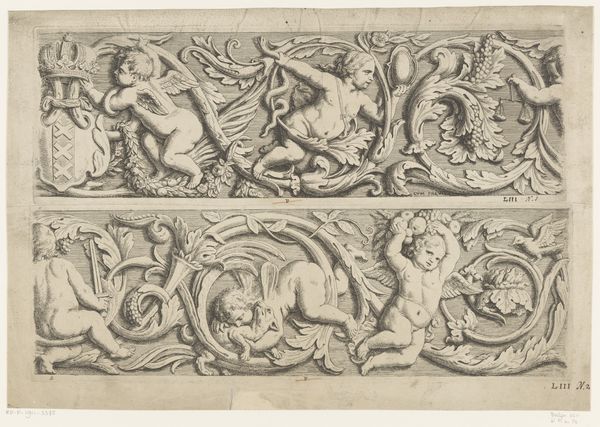
print, engraving
#
baroque
#
pen drawing
# print
#
pen illustration
#
pen sketch
#
figuration
#
form
#
engraving
Dimensions: height 218 mm, width 292 mm
Copyright: Rijks Museum: Open Domain
Jean Lepautre made these two friezes with acanthus scrolls and putti sometime in the 17th century. These prints were made through engraving, a printmaking technique where an image is incised onto a metal plate, which is then used to create multiple impressions. The artist would have painstakingly carved the design into the metal, using tools to create lines that hold ink. The depth and density of the lines determine the visual weight and texture of the final print. The friezes are filled with detailed, stylized acanthus leaves and playful putti, or cherubic figures. The repetitive nature of printmaking allowed for the wide distribution of decorative designs, influencing the aesthetics of interiors and furnishings across Europe. The level of skill required for engraving meant it was often a specialized profession, relying on workshops of skilled artisans. Understanding the labor-intensive process of printmaking helps us appreciate the artistry and craft involved in producing these images, blurring the lines between fine art and design.
Comments
No comments
Be the first to comment and join the conversation on the ultimate creative platform.

